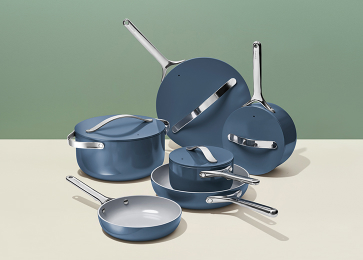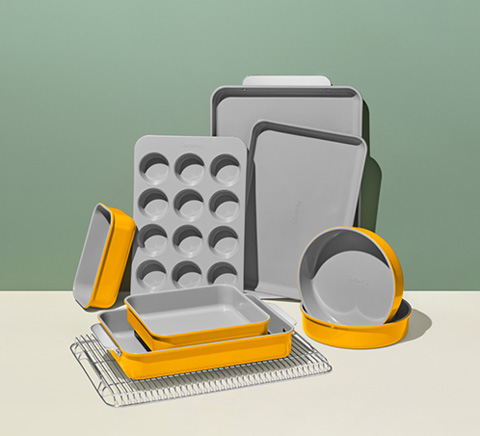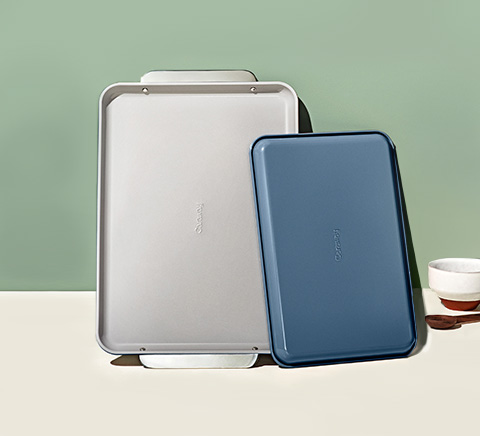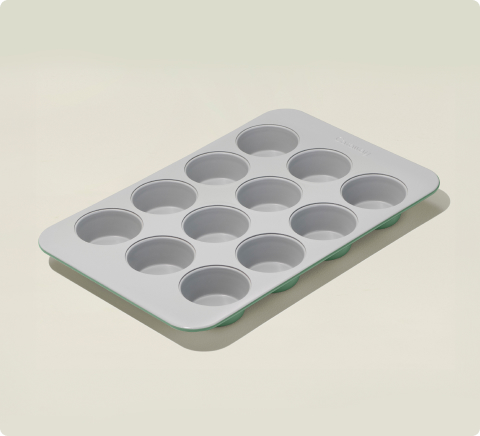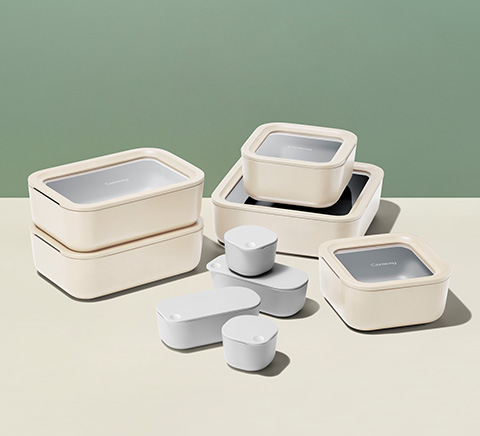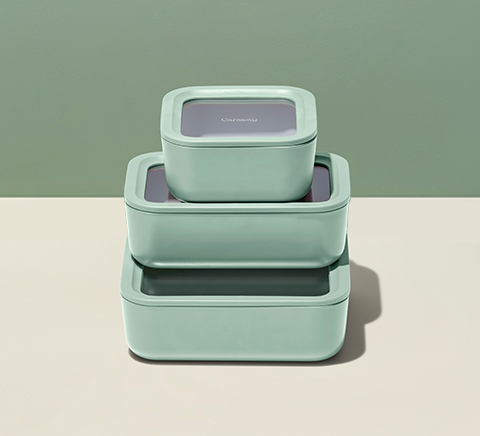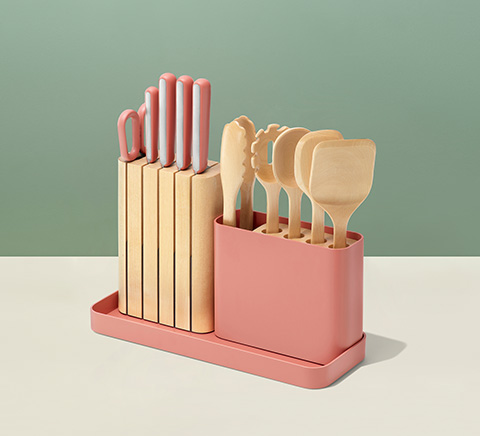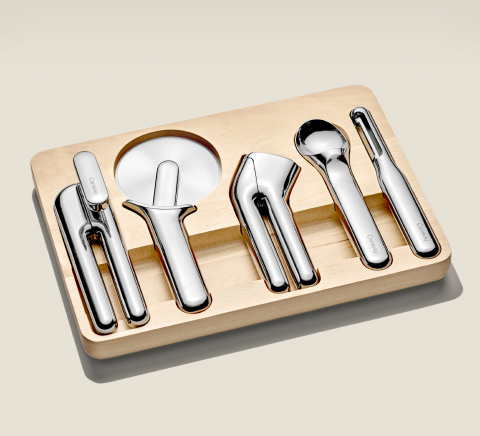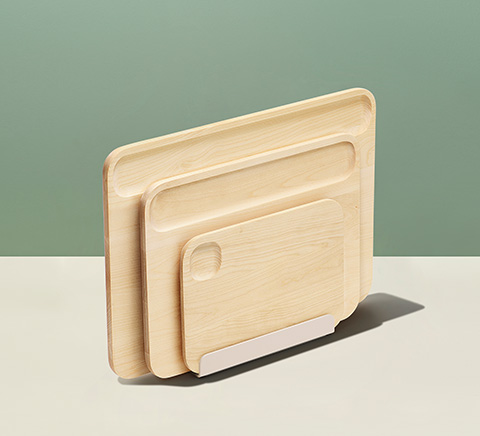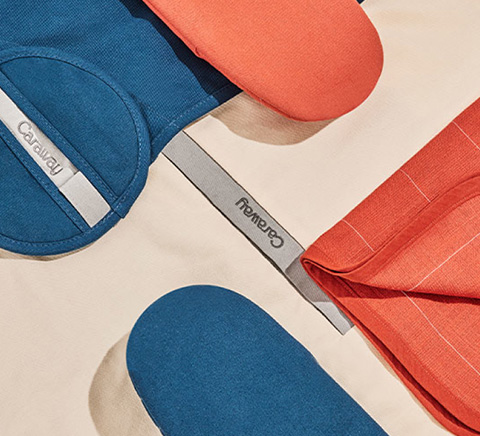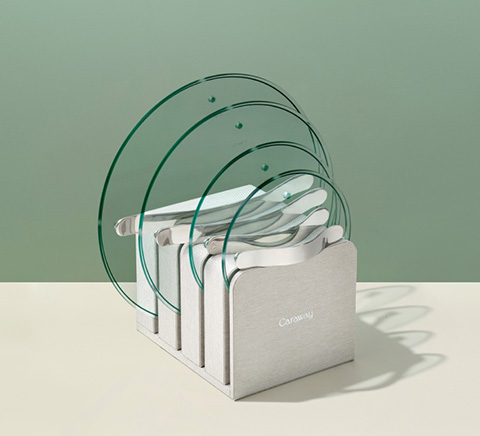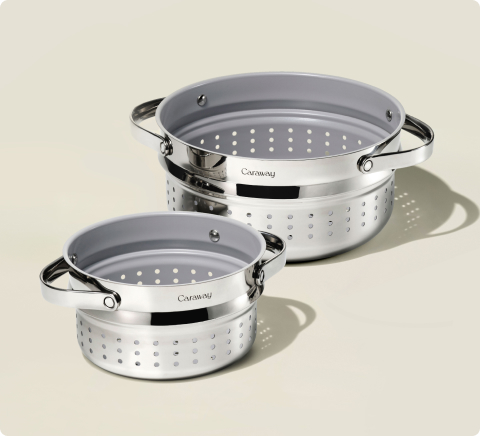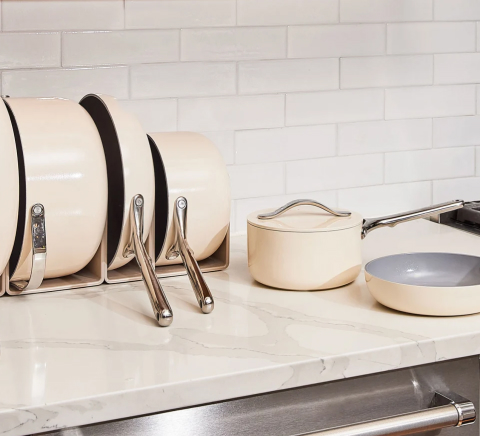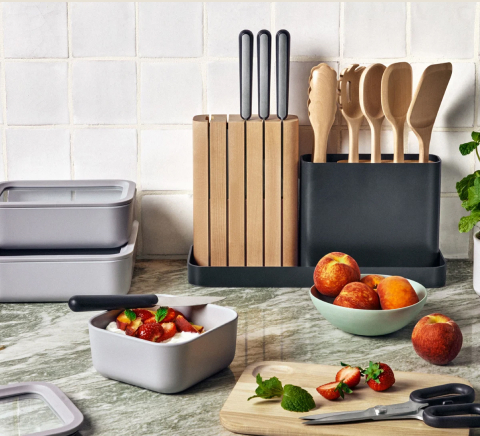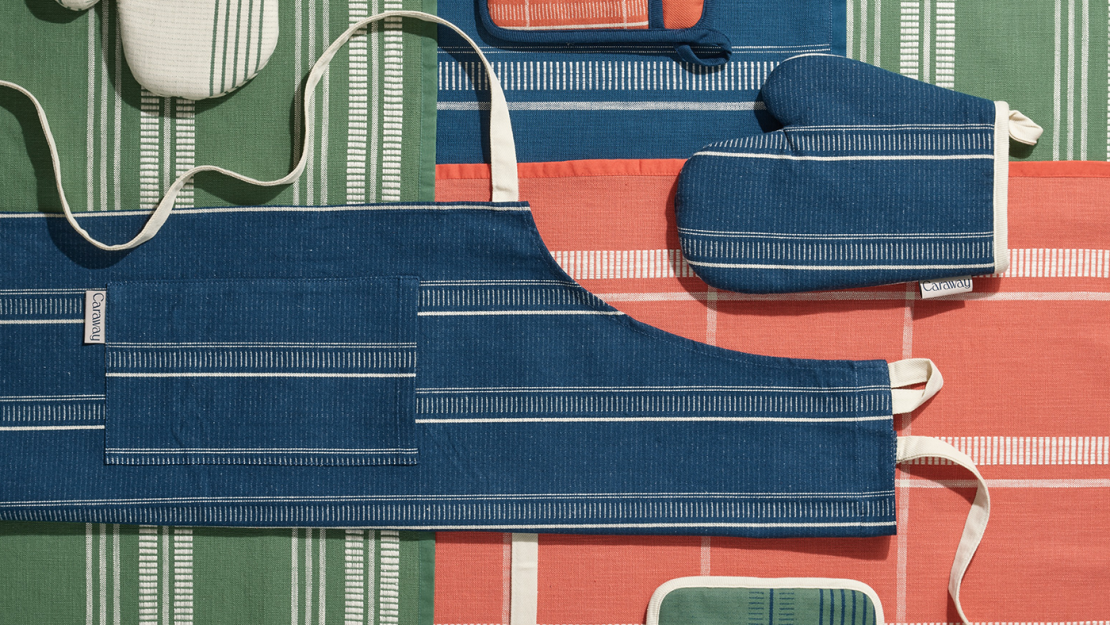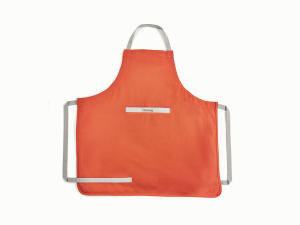Aprons have been around for a while, and for a good reason. Click here for the different styles of aprons, what they’re suited for, and everything you need to know.
We’ll start by clarifying that yes, there is more than one type of apron.
There are actually quite a few styles of the apron. If you’re someone who enjoys having a well-stocked kitchen - you know, with a proper set of knives, the essential pots and pans, and some specialty tools - then you’ll probably want to have an apron on hand, too.
Think of it this way: aprons are to cookware as the sidekick is to the superhero. Did you get that analogy? We’re saying that aprons make life in the kitchen much, much easier than it otherwise could be.
Aprons provide several benefits and are highly functional. (They can also make for thoughtful birthday presents, BTW). But in all seriousness, a kitchen stocked with an apron just sends the right type of signals. It almost makes the kitchen seem more trustworthy, in a way. And may even raise the expectations for the food… but no pressure.
What is a Chef Apron?
A chef apron is a traditional-style apron. Essentially, it’s what we picture when someone says “apron.” Chef aprons, which also go by “bib aprons,” are universally the most popular style.
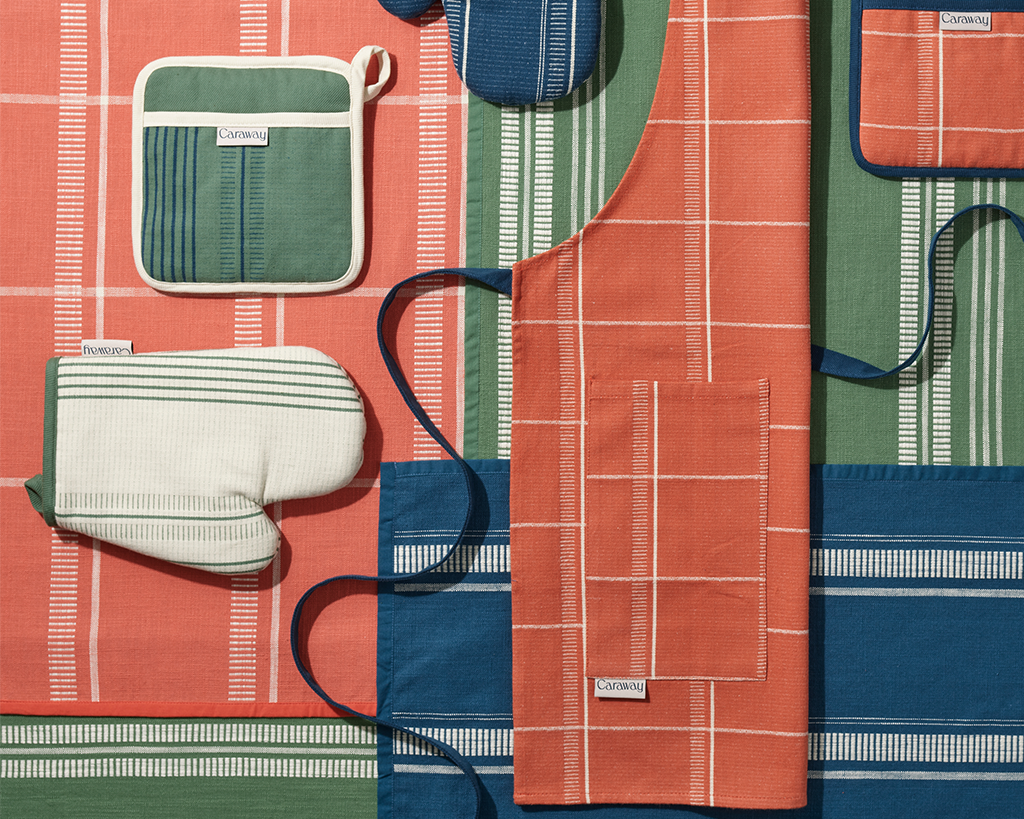
Chef aprons are designed for, you guessed it, chefs, and so they provide full-body coverage to protect against fiery flames and other dramatics that occur in a busy kitchen. This style covers the entirety of the torso, ending at the knees, has two front pockets on either side, and ties behind the neck and around the waist. Oh, and the length falls somewhere between the knee and upper ankle (nice try, runaway spills - think again).
Spills, splashes, flames, and fire: a chef apron has you covered. While professional chef aprons are often made from a heavyweight and rather hardcore material, for the non-chefs of the world, a Linen Apron in the chef apron design style will be perfect.
A Linen Apron is every kitchen’s favorite assistant, best friend, and sidekick. A lightweight yet sturdy 100% cotton blend material provides softness to touch while being strong enough to endure a lifetime of drying and cleaning. With thoughtful design features of an adjustable neck strap, deep front pockets, and a hanging loop for easy storing, a Linen Chef Apron makes life in the kitchen that much easier and much more enjoyable. Picture perfect.
Other Styles of Apron
Like knives, spatulas, pots, and pans, it’s a big wide world of aprons out there. There are probably more than you think there’d be, and here’s the 411 on a few of them.
Waist Apron/Half Apron
Waist aprons, also known as half aprons or server aprons, are shorter in length and do not provide upper body coverage.
In the same way that chef aprons are designed for chefs, waist aprons (server aprons) are designed for servers. The shorter length is more comfortable for hustling around from table to table, and pockets are on both sides to hold pens, straws, utensils, and bills.
Waist aprons are optimal for servers, front-of-house workers, bussers, and waiters and waitresses. Are they a good choice for the kitchen at home? Mmm, if you’re worried about feeling constricted or tend to feel hot when you’re cooking, then yes, a waist apron may be a top choice.
4-Way Apron
Bouncing back to another more heavy-duty apron, we have the 4-way apron. This apron style has four layers, facilitating it to be folded and refolded multiple times, creating numerous clean surfaces available for use.
With the ability to create multiple new places to wipe your hands, there’s no worry of transferring salad dressing to the main course or gravy to the dessert course when preparing a full meal. This apron is most useful in busy settings, such as for back-of-house kitchen staff.
Bistro Apron
Bistro aprons provide coverage from the waist down all the way to right above the feet, with no upper body coverage. Bistro aprons are intended for front-of-house staff, and their long length protects the entirety of legs and pants when completing messy tasks, such as wiping down tables and clearing dishes. But for full-time dishwashing? There’s an apron for that too!
Dishwasher Apron
For any serious dishwashing, a dishwasher apron is what you need. This apron style is full-length (upper body and extending down to the ankle) and waterproof, perfectly designed to keep a dishwasher dry. Dishwasher aprons are definitely the most “intense” apron style, often being heat-resistant, fire retardant, and cut-resistant, too.
Cobbler Apron
Now we’re leaving the world of restaurants and catering and entering the world of hospitality. Cobbler aprons, also known as smock aprons or simply a smock, are like an apron and a mixed shirt. In other, very simple words, it’s a shirt apron.
Cobbler aprons only provide coverage for the upper body, both front and back. Side ties allow them to be pulled tighter or kept looser, and they feature one large pocket around the front of the waist. Cobbler aprons are popular in the hospitality industry (think of housekeeping services for hotel rooms) and are also a great choice for bakery, school, and hospital settings, too.
Disposable Apron
The last style of apron to talk about is a disposable apron — and don’t dismiss it too quickly! Disposable aprons are, yes, disposable, usually made from a water-resistant variation of plastic. This style varies in coverage, anywhere from full-length to waist apron style.
While a disposable apron may seem cheap and unappealing, they come in handy surprisingly often. For occasional tasks like science fair projects, arts and crafts, and home renovations, a disposable apron can save you heaps of paper towels and multiple loads of laundry.
Aprons Just Make Sense
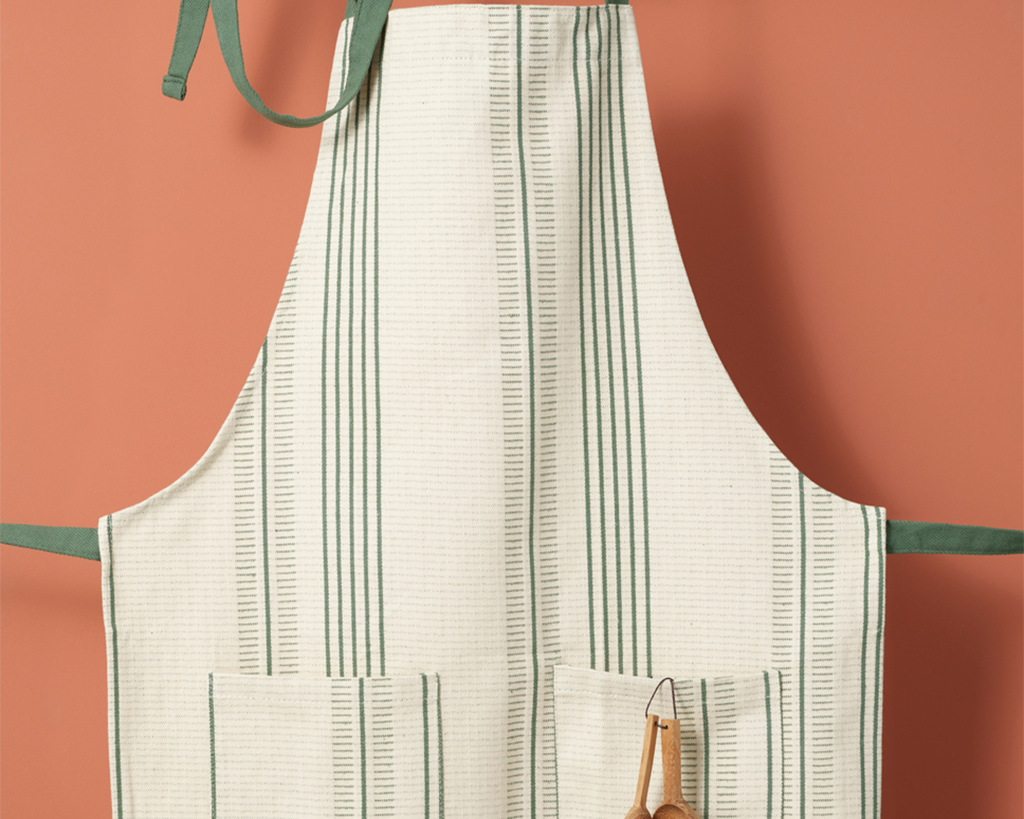
Aprons - and all Kitchen Linens, really, are underrated. They’re in the category of things that seem negligible and omittable but are actually more like silent superheroes. Not all superheroes wear capes, remember?
Anyone who spends a considerable amount of time in the kitchen needs an apron (or two). Aprons just make sense and provide so many functional benefits; safety, hygiene, storage, and convenience, to name a few. Not to mention, they can totally match your kitchen aesthetic.
Aprons are primarily worn for the safety benefits they provide. Aprons create a safer environment by protecting against hot liquid and food, high heat, and more. The kitchen can be a fast-paced and high-stress environment, and accidents are bound to happen. This is why some apron styles offer more coverage than others; more coverage means more protection and with more activities going on around you, having your own “protective barrier” is just the smart thing to do.
Hygiene is another benefit of wearing an apron. While your kitchen Tea Towels should already be segregated for “messy” and “clean” uses, an apron is a sure way to keep “food mess” isolated. Using an apron helps prevent any cross-contamination and ensures messes like oil spills, grease, and raw meat juices don’t come in contact with anything that’s going to be near our food.
Pockets, pockets, pockets. The pockets in aprons are extremely helpful, and we often don’t realize just how useful they are until we need them. Your cell phone, a small recipe notebook, a TV remote, or a draped Tea Towel are just a few examples of things that are a lot more useful when they’re right in arm’s reach.
A Short History of the Chef Apron
For a quick #LearningMoment, we thought it’d be fun to go over a bit of the history surrounding the apron, specifically, the chef apron.
The chef apron (also known as a “bib apron,” “French chefs’ apron,” or “barbecue apron”) has been worn for centuries, with countries across the globe having their own variations of the garment. The apron comes from humble beginnings, with its earliest versions using scraps of linen and cloth tied in knots and wrapped around the body. The intuitive design and protective nature made it a common item in trade industries and many lower-economic class roles.
The use of aprons in North America dates back to Native Americans and even earlier indigenous communities. Between the mid-1800s and the 1950s, aprons became a symbol of women in the household, specifically tied to household chores, cooking, and cleaning. With the introduction of cheaper clothing, washing machines, and the beginning of the feminist movement in the 1960s, aprons experienced a notable drop in prevalence.
Today, aprons are mainly used for formal work purposes, such as chefs in professional kitchens, and are a more casual and playful item for the home. With recent foodie movements glorifying and glamorizing the cooking process, cooking is seen less as a chore that requires a protective uniform and more of a pleasure that is done casually and socially. However, considering the practicality and convenience that comes with wearing a high-quality Apron, it simply makes life in the kitchen more enjoyable.
Now You Know
Well, now you know.
Stay clean and comfortable, everyone — and happy cooking!
Sources
Working in Professional Kitchens: The Importance of Wearing Aprons | How Important
The Evolution of American Foodie Culture
Kitchen Styles: Which One Is Right For You? | HGTV
